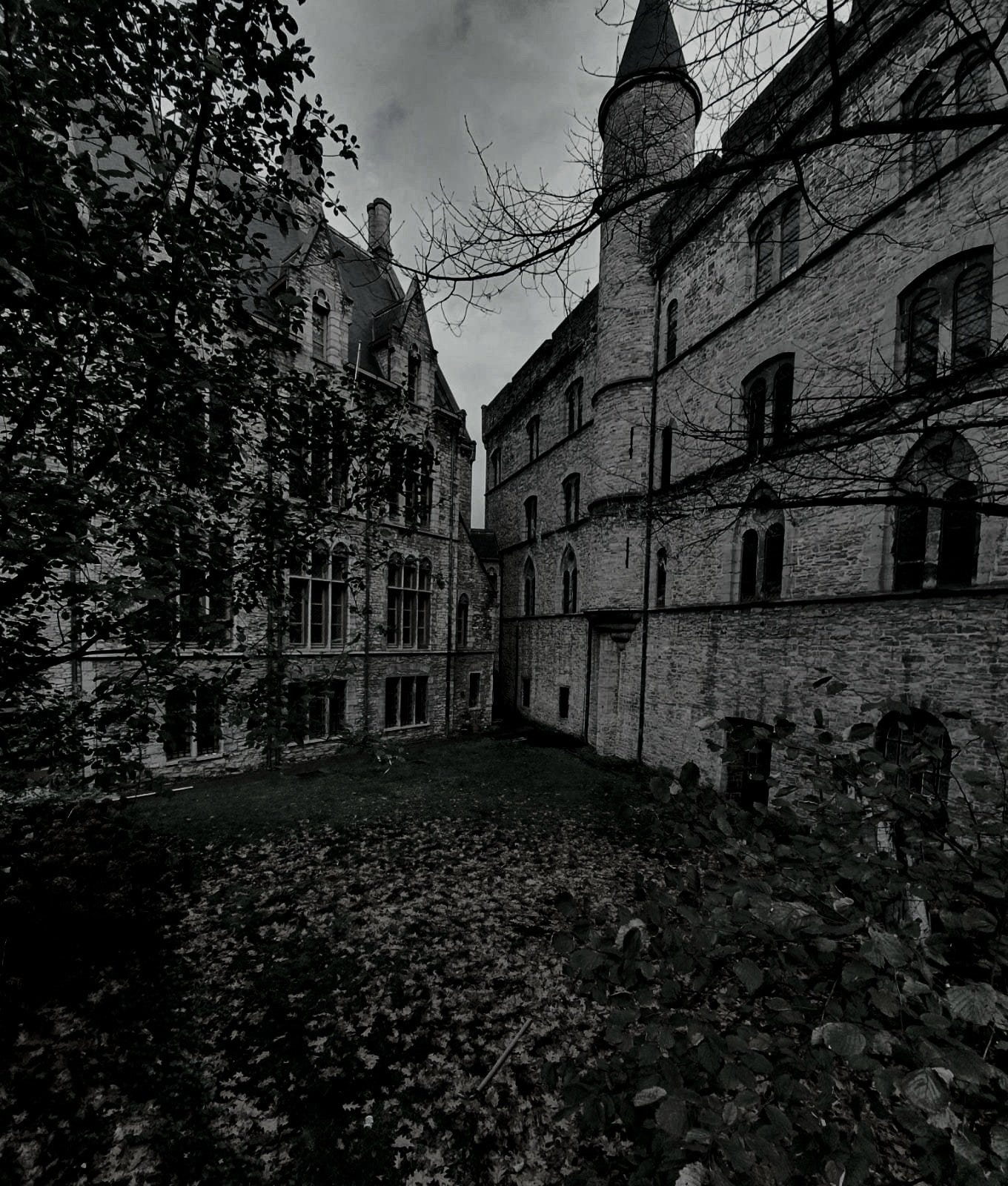Thank you so much to all of you who have subscribed to my newsletter. It means the world many of you are interested in receiving some longer pieces of Flemish folklore into you inbox. The letter will include a historical place connected with folklore and a folktale every month, and of course there will always be a bit of news at the ending.
This Month’s Historical Place
Geeraard the Devil Castle in Ghent
In the city centre of Ghent there’s a stunning piece of 13th century Gothic architecture known as Geeraard de Duivelsteen or Geerard the Devil castle. The building was named after a knight who in all likelihood wasn’t as much as a villain as legend wants you to believe, but since I’m all about folklore this post will focus on the ruthless Geeraard encountered in folktales and not the historical figure this legend is based on.
Evil Geeraard wasn’t the kind of person you wanted to fall out with. According to the story he murdered his father as an adolescent in cold blood when his father wanted him to join the crusades. With his father out of the way he married and soon after a son was born, but as that son who was also called Geeraard grew the two started to hate each other vehemently. Father and son both fell in love with the same woman which caused a bitter rivalry between the two. After many violent arguments the older Geeraard decided to withdraw. Maybe he thought his son deserved a chance of happiness? Of course not! This is Geeraard we’re talking about, and his son wasn’t a fool either. He knew his father was plotting something.
His father wanted to see his son one last time before he would move to the countryside. In reality, his father had commanded some of his most faithful ruffians to overpower the younger Geeraard and drown him into the river. His son decided not to go and patiently waited underneath a nearby gate. After a while his father became impatient and left his own hiding spot to see whether the body of his son was already floating in the river. Either father and son looked very much alike, or Geeraard’s ruffians weren’t the cleverest because the next thing they did was drown their master in the river.
You would think the story ends here, but it doesn’t. As you have probably already guessed the apple didn’t fall far from the tree. The younger Geeraard woke up one day deciding that he would murder his wife and new-born son with an axe. Fortunately, both managed to escape. The years went by peacefully, until of course, Geeraard’s son (whose name I can’t find but I hope he wasn’t called Geeraard) grew up and went back to Ghent to slay his father.
To this day, it’s said the ghosts of both Geeraards are still chasing each other in the castle as soon as darkness falls. Considering their life stories, it can only be assumed that they haunt each other quite brutally.
This Month’s folktale
The witch who sometimes was a crow
In a small town near the Belgian city of Antwerp there once lived a free-spirited lady who was feared and shunned wherever she went. Not that she minded. The unnamed woman dragged her spinning wheel outside every day and spun until the sun went down while a black cat rested at her feet.
The other townspeople did mind though! There was no way the baker's son or the butcher's wife would risk certain death by walking past the derelict cottage where the witch was said to live. People even preferred making a detour through the woods, but they kept her house under careful observation. Quickly the townspeople started to notice that while she never left her home or unearthly front garden there was one creature who did: a crow.
They all speculated and how they loved to speculate. Some claimed the crow was none other than the outcast living in their midst. Whenever the crow was spotted flying through the air they would exclaim 'ah, the witch is there.' Others thought the crow was the ghost of her deceased husband, still visiting her from the realm of the death.
Whatever the case, there was magic involved and some of the inhabitants visited the monks whenever bad luck came their way as they were all certain the witch was responsible. Besides, the monks were always happy to help. They knew how to break curses and defeat witchcraft with powders and prayers - for a fee of course.
Some News
I’m delighted that one of my short stories was recently published in print for the very first time. The Witches’ Circle is inspired by the dark witchy folklore of Flanders and can be read in Issue 3 of The Seelie Crow. Both the digital version of the magazine and the printed one can be found on their website. The story is about a girl who runs away from home only to find herself in a cursed forest.
I’m also very happy to share with you all that I have teamed up with my dearest friend whose work continues to inspire me every day at SuperstitionSat to start a new project that will bring superstitions and literature into your home. The project is called Salt & Mirrors & Cats and we hope to announce more news soon.
Thank you very much for reading my first letter!






Fantastic from day one!
I enjoyed this a lot.
"The witch who sometimes was a crow" is a fun folktale.